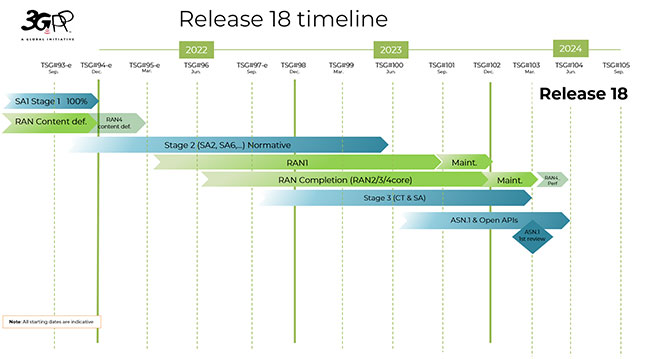The world of mobile communication is constantly evolving, and 3GPP (3rd Generation Partnership Project) plays a vital role in defining the standards that keep us connected. Their latest release, Release 18, marks a significant step forward, ushering in the era of 5G-Advanced.
Release 18 is not a complete overhaul of 5G, but rather a focused effort to enhance existing capabilities and introduce new features. Here’s a breakdown of some key areas of improvement:
-
Enhanced Mobile Broadband (eMBB): The core of 5G’s data delivery gets a boost. Expect features like Carrier Aggregation (CA) and Dual Connectivity (DC) improvements, leading to potentially higher data speeds and better network efficiency.
-
Ultra-Reliable Low-Latency Communication (uRLLC): This critical area for applications like autonomous vehicles and remote surgery sees advancements. Features like improved scheduling and reduced latency will ensure more reliable and timely data transmission.
-
Massive Machine-Type Communication (mMTC): The ever-growing network of connected devices will benefit from optimizations for power consumption and device management. Release 18 introduces features like longer battery life for devices and more efficient network signaling.
-
Network Slicing Enhancements: This technology allows operators to create virtual networks within the physical network, catering to specific application needs. Release 18 refines network slicing capabilities, enabling more flexible and dynamic resource allocation.
-
AI for Network Intelligence: Artificial intelligence (AI) is poised to play a bigger role in managing 5G networks. Release 18 lays the groundwork for AI-powered features like network optimization, anomaly detection, and self-healing capabilities.
The advancements introduced in Release 18 will have a ripple effect across various industries:
-
Enhanced Mobile Experiences: Users can expect faster downloads, better streaming quality, and improved responsiveness in latency-sensitive applications.
-
The Rise of the Machines: mMTC improvements will pave the way for a wider deployment of Internet of Things (IoT) devices, enabling smarter cities, connected homes, and industrial automation.
-
Unlocking New Possibilities: uRLLC advancements will empower mission-critical applications like autonomous vehicles, remote surgery, and industrial control systems.
-
Smarter and More Efficient Networks: AI-powered network management will lead to more efficient resource utilization, improved network performance, and potentially lower operational costs for mobile operators.
The Road Ahead for 5G-Advanced
Release 18 is just the beginning of the 5G-Advanced journey. As research and development continue, we can expect further refinements and the introduction of even more groundbreaking features.
